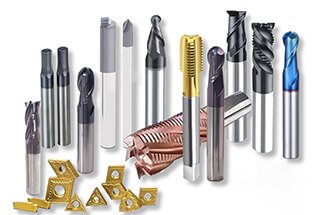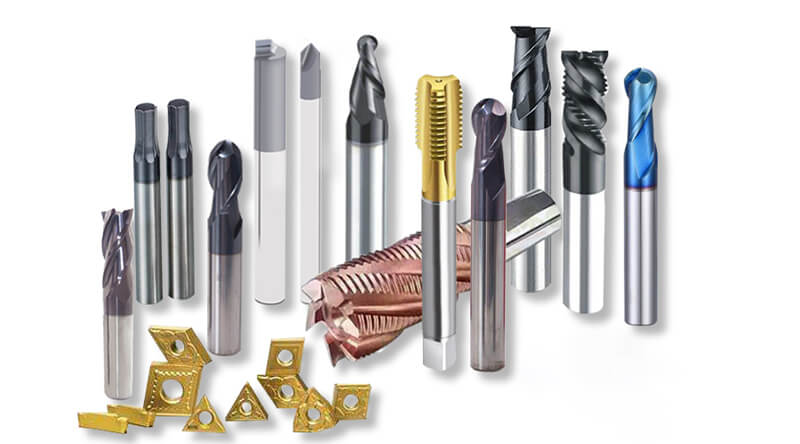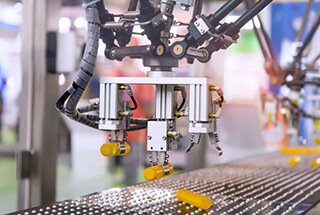
Choosing the right coating for your cutting tools can significantly enhance their performance and longevity. But with various options available, how do you decide? This article dives into the different types of tool coatings, such as PVD and CVD, explaining their unique properties and benefits. You’ll learn how the right coating can improve tool hardness, oxidation resistance, and surface quality, ultimately reducing costs and boosting efficiency in your machining processes.


Tool Surface Coating Technology is a surface modification method developed to meet market demands. Since its introduction in the 1960s, it has been extensively utilized in metal cutting tool production. The advent of high-speed cutting processing technology has led to a rapid development and application of coating technology, making it a crucial aspect of high-speed cutting tool manufacturing.
The technology involves forming a thin film on the tool’s surface through chemical or physical methods, resulting in excellent comprehensive cutting performance that meets the requirements of high-speed cutting.
In summary, the cutting tool surface coating technology has the following characteristics:
The use of coated cutting tools offers several benefits, including:
Adequate surface treatment of small circular tools can lead to an increase in tool life, shorter processing cycle time, and an improvement in the quality of the processed surfaces.

However, choosing the right tool coating to meet specific processing needs can be a complicated and time-consuming task. Each coating has its own unique advantages and disadvantages in cutting. Using an inappropriate coating can result in a shorter tool life than uncoated tools and even create additional problems.
There are numerous types of tool coatings available in the market, including PVD coatings, CVD coatings, and composite coatings that alternate between PVD and CVD. These coatings can be easily obtained from tool manufacturers or coating suppliers.
This article will provide an overview of the common properties of tool coatings and highlight some common PVD and CVD coating options. The characteristics of each coating play a crucial role in determining which coating is best suited for cutting.
TiN is a commonly used PVD coating that can enhance tool hardness and has a high temperature resistance to oxidation. This coating is utilized in high-speed steel cutting tools or forming tools to achieve optimal processing outcomes.
CrN coating is highly sought after due to its excellent anti-adhesion properties, making it the preferred coating for processes that frequently result in built-up edge. Once applied, this nearly invisible coating significantly improves the processing performance of high-speed steel tools, carbide tools, and forming tools.
The CVD diamond coating is the best choice for cutting tools used in the processing of non-ferrous metal materials. It provides excellent performance when cutting graphite, metal matrix composites (MMC), high silicon aluminum alloy, and other highly abrasive materials.
Please note that pure diamond-coated tools cannot be used to process steel parts because the high cutting heat generated during processing causes a chemical reaction that damages the adhesion layer between the coating and the tool.
Related reading: Ferrous vs Non-ferrous Metals
Coatings suitable for hard milling, tapping, and drilling are unique and have their respective specific applications. Furthermore, multi-layer coatings can also be used, which consist of other coatings embedded between the surface layer and the tool base, resulting in an extended tool life.
The addition of carbon elements in the TiCN coating enhances tool hardness and provides improved surface lubricity. This coating is ideal for high-speed steel tools.
The alumina layer formed in the TiAlN / AlTiN coating significantly improves the high-temperature machining life of the tool. This coating is suitable for carbide tools primarily used for dry or semi-dry cutting.
The ratio of aluminum to titanium in the coating determines the surface hardness of the coating, with AlTiN coatings providing a higher surface hardness than TiAlN coatings. As a result, it is a viable option in the field of high-speed machining.

A high surface hardness is a reliable method of improving tool life. In general, the harder the material or surface, the longer the tool will last. Titanium carbide nitride (TiCN) coatings have a higher hardness than titanium nitride (TiN) coatings. The hardness of TiCN coatings is increased by 33% due to the increased carbon content, with a hardness range of approximately HV3000-4000 (varying depending on the manufacturer).
CVD diamond coatings with a surface hardness of up to HV9000 have become more prevalent in tool applications, resulting in a 10-20 times increase in tool life compared to PVD coated tools. The high hardness and cutting speed of diamond coatings, which can be 2 to 3 times greater than uncoated tools, make it an excellent choice for cutting non-ferrous materials.
Oxidation temperature refers to the temperature at which the coating begins to break down. The higher the oxidation temperature, the better it is for cutting at high temperatures.
Although TiAlN coatings may have a lower hardness at room temperature compared to TiCN coatings, it is much more effective in high-temperature processing. The reason for this is that a layer of alumina can form between the tool and the chip, which transfers heat from the tool to the workpiece or chip, thereby retaining the hardness of the TiAlN coating at high temperatures.
Carbide tools generally cut faster than HSS tools, making TiAlN the preferred coating for carbide tools. Carbide drills and end mills usually use PVD-TiAlN coatings.
Abrasion resistance refers to a coating’s capability to withstand wear. Although some workpiece materials may not be naturally hard, the elements added during manufacturing and the processing method may cause the cutting edge of the tool to chip or dull.
High coefficients of friction generate increased cutting heat, shortening or compromising the coating life, whereas lower coefficients of friction significantly extend tool life.
A fine, smooth, or regularly textured coated surface reduces cutting heat as it allows chips to slide quickly away from the front face of the cutter, thereby decreasing heat generation. Coated tools with improved surface lubrication can also be machined at higher cutting speeds compared to uncoated tools, further preventing high-temperature welding to the workpiece material.
The anti-adhesion property of the coating prevents or reduces the chemical reaction between the tool and the material being processed and prevents the deposition of workpiece material on the tool.
During the machining of non-ferrous metals (such as aluminum and brass), built-up edges (BUEs) often occur on the tool, leading to tool chipping or oversized workpieces. Once the material begins to adhere to the tool, the adhesion will continue to expand. For instance, when processing aluminum workpieces with forming taps, the aluminum that adheres to the taps after each hole is processed will increase, eventually causing the tap diameter to become too large and resulting in out-of-tolerance workpieces that must be scrapped.
The coating with good anti-adhesion properties can be effective even in situations where the performance of the coolant is poor or the concentration is insufficient.

The cost-effectiveness of coating applications in metal machining is influenced by multiple factors, but each specific processing scenario typically narrows down the viable coating options to a select few. The judicious selection of an appropriate coating and its properties can significantly enhance processability and tool performance, while an ill-suited choice may yield negligible improvements or even detrimental effects.
The efficacy of tool coatings is intricately linked to cutting parameters such as depth of cut, cutting speed, and coolant strategy. These factors interact with the coating’s properties to determine overall tool life and machining efficiency. For instance, high-speed cutting may benefit more from thermal barrier coatings, while abrasive materials might require coatings with superior wear resistance.
To ascertain the optimal coating for a particular application, empirical testing through controlled machining trials remains the most reliable method. This approach allows for direct comparison of coating performance under actual operating conditions, accounting for material-specific interactions and process variables.
Coating suppliers are continuously innovating to develop advanced coatings that offer enhanced resistance to heat, friction, and wear. Modern coatings may incorporate multi-layer structures, nanocomposites, or adaptive properties to meet the evolving demands of high-performance machining. Collaborating closely with coating and tool manufacturers is crucial for evaluating and implementing state-of-the-art tool coatings. This partnership can provide access to the latest developments in coating technology, such as:
-End-








